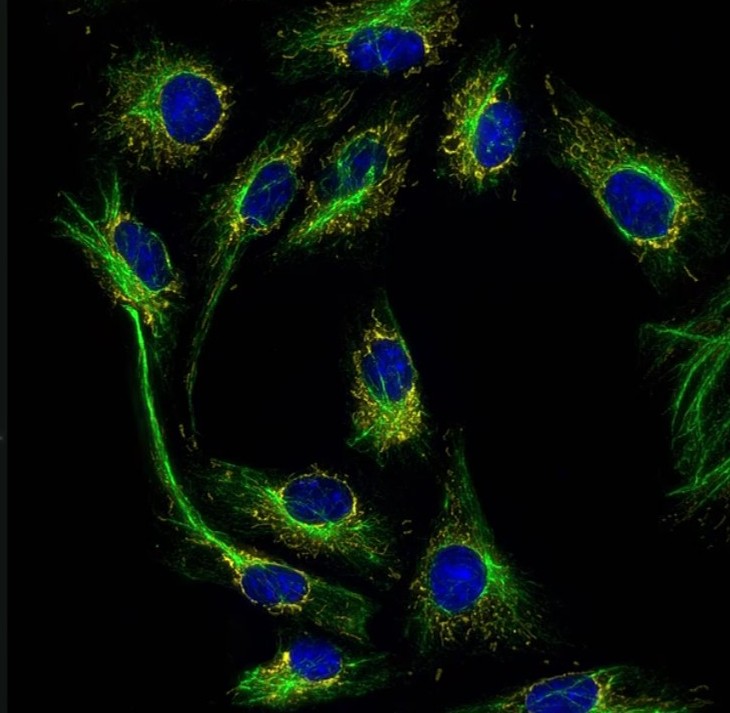The offer of our laboratory has been enriched with a state-of-the-art Microhub system, which allows for obtaining very clean and accurate images.
– says Dr Sylwia Michlewska, Head of the Laboratory of Microscopic Imaging and Specialized Biological Techniques at the University of Lodz Faculty of Biology and Environmental Protection
The system is equipped with a very high resolution Thunder module. This device makes it possible to observe objects larger than a single field-of-view of the lens at confocal resolution, which allows for detailed visualisation of the tested samples in the XYZ axes and their reconstruction into 3D images. The new equipment also makes it possible to make films, which is important when interpreting research results and presenting them at conferences and in scientific journals.
The microscope is fully automated. The device automatically adjusts the image sharpness and is operated via intuitive software. This makes it much easier to get results
– adds Dr Michlewska.
What can the new equipment be used for?
Automatic scanning of preparations, fast operation and intuitive handling make it possible for this system to perform a large number of screening tests, which is necessary, for example, for the evaluation of medicinal products. Research on a model imitating human skin or bone implants is ongoing at the Faculty of Biology and Environmental Protection. The use of nanoparticles in the production of vaccines, in the therapy of cancer and neurodegenerative diseases is a separate topic. The new equipment will be very useful for continuing this extremely important research and this is only a small part of the applications for which it can be used.
The Leica MICA WideField system is characterised by versatility of applications. It allows not only the visualisation of cells, but also the rapid imaging of large tissue fragments. The equipment was purchased at the end of the year thanks to the initiative of the Dean of the Faculty, Prof. Dr hab. Andrzej Kruk and the support of the Rector of the University of Lodz, Prof. Dr hab. Elżbieta Żądzińska.
Thanks to the new system, the confocal microscopes which were previously used in our Laboratory will be able to "get some rest" – says Dr Michlewska. The equipment arrived to us a few weeks ago and we are currently undergoing training, but we are already encouraging scientists to include it in their research projects. Importantly, people from other units cooperating with scientists from the Faculty of Biology and Environmental Protection will also be able to use the microscope. We are open to cooperation with external companies, adds Dr Michlewska. We hope that other scientific institutions will also take advantage of our offer.
Doktor Sylwia Michlewska
Source: Laboratory of Microscopic Imaging and Specialized Biological Techniques at the University of Lodz Faculty of Biology and Environmental Protection
Text: Justyna Kowalewska (3PR)
The photos were taken using the Leica MICA WideField system and made available thanks to the courtesy of KAWA.SKA, the exclusive distributor of Leica in Poland.




